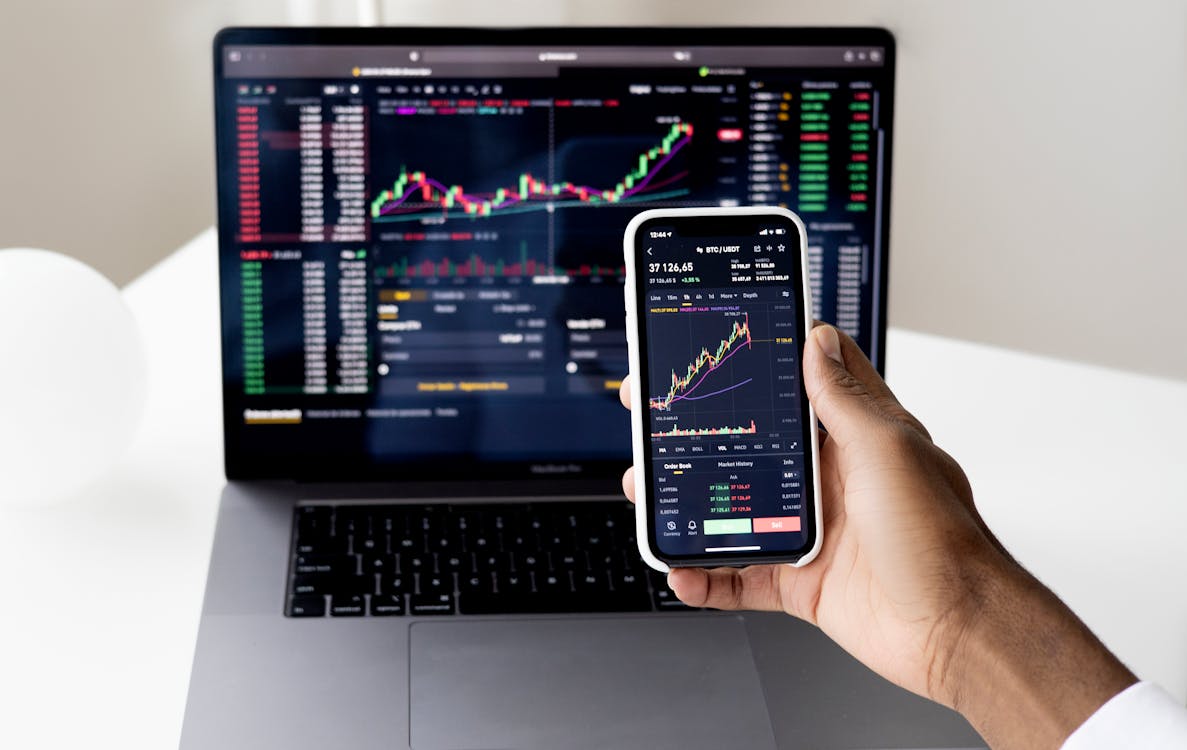A Comprehensive Literature Review Of Algorithmic Trading
Author: ChatGPT
February 28, 2023
Introduction
Algorithmic trading, also known as automated trading or black-box trading, is a form of trading that uses complex algorithms to make decisions about when and how to buy and sell financial instruments. Algorithmic trading has become increasingly popular in recent years due to its ability to quickly analyze large amounts of data and make decisions based on that data. As such, it has become an important tool for traders looking to maximize their profits.
In this blog post, I will provide a comprehensive literature review of algorithmic trading. I will discuss the various types of algorithmic trading strategies, the advantages and disadvantages of using algorithmic trading, and the potential risks associated with it. I will also provide some tips for those interested in getting started with algorithmic trading.

What is Algorithmic Trading?
Algorithmic trading is a type of automated trading that uses computer algorithms to make decisions about when and how to buy or sell financial instruments such as stocks, bonds, futures contracts, currencies, and other derivatives. The algorithms used in algorithmic trading are designed to identify patterns in the market data and then use those patterns to make decisions about when and how much to buy or sell.
Algorithms can be programmed with different parameters such as time frames (e.g., day-trading or swing-trading), risk tolerance levels (e.g., aggressive or conservative), order types (e.g., market orders or limit orders), etc., which allows traders to customize their strategies according to their own preferences and goals.

Types of Algorithmic Trading Strategies
There are several different types of algorithmic trading strategies that can be used by traders depending on their goals and risk tolerance levels. Some common types include: * Momentum Trading: Momentum traders look for stocks that have recently experienced a large price move either up or down in order to capitalize on the momentum created by the move. Momentum traders typically use technical indicators such as moving averages or relative strength index (RSI) in order to identify potential trades. * Mean Reversion Trading: Mean reversion traders look for stocks that have recently experienced a large price move but are now showing signs of returning back towards their historical average price level (i.e., mean reversion). Mean reversion traders typically use technical indicators such as Bollinger Bands® or Keltner Channels® in order to identify potential trades. * Arbitrage Trading: Arbitrage traders look for discrepancies between two different markets (e.g., stock exchanges) in order to capitalize on the difference in prices between them by buying low on one market and selling high on another market simultaneously (i.e., arbitrage). Arbitrage traders typically use statistical arbitrage techniques such as pairs-trading in order to identify potential trades.
Advantages & Disadvantages of Algorithmic Trading
Algorithmic trading offers several advantages over traditional manual methods including speed, accuracy, cost savings, flexibility, scalability, etc.. However, there are also some disadvantages associated with algorithmic trading including lack of human judgment/oversight which can lead to errors if not properly monitored; increased risk due to high frequency/volatility; potential conflicts between algorithms; etc.. It is important for traders considering using algorithmic strategies understand both the advantages and disadvantages before making any decisions about whether it is right for them or not.

Risks Associated With Algorithmic Trading
As with any type of investing there are risks associated with algorithmic trading including market volatility/liquidity risk; counterparty risk; operational risk; regulatory risk; etc.. It is important for traders considering using algorithmic strategies understand these risks before making any decisions about whether it is right for them or not so they can properly manage them if they decide it is right for them after all .

Tips For Getting Started With Algorithmic Trading
If you’re interested in getting started with algorithmic trading there are several things you should consider before diving into it head first including: understanding your goals/risk tolerance level; researching different types of algorithms/strategies available; understanding the risks associated with each strategy; testing your strategy on paper before implementing it live; understanding your broker’s fees/commissions structure; etc.. By taking these steps you can ensure you’re better prepared when you do decide it’s time take the plunge into live algorithmic trading!


How Long Does It Take To Sell Stock And Get Money?
Discover the answer to one of the most frequently asked questions in the world of finance - learn how long it takes to sell stock and receive your earnings.

What Are High Dividend Stocks?
Discover how investing in high dividend stocks can potentially provide a steady income stream and increase your long-term returns in the stock market.

Are Data Science And Machine Learning The Same?
Data science is a field of study that focuses on extracting insights from large amounts of data. It involves using various techniques such as machine learning, natural language processing, statistics, and data mining to analyze data sets and uncover patterns or trends.

Are Remarkable Tablets Worth It?
Are you looking for a device that can replace your notebooks and printed documents? If so, you may have heard of the reMarkable 2 tablet.
